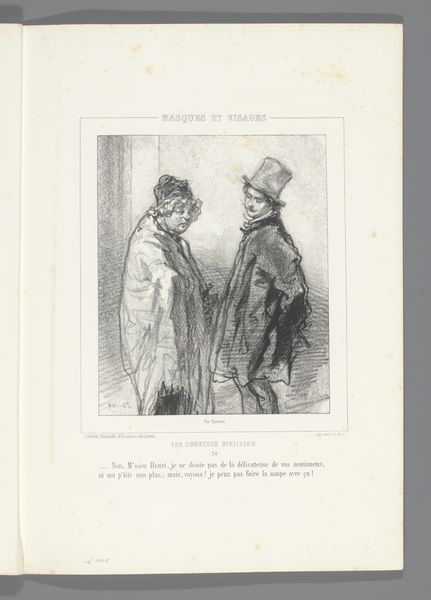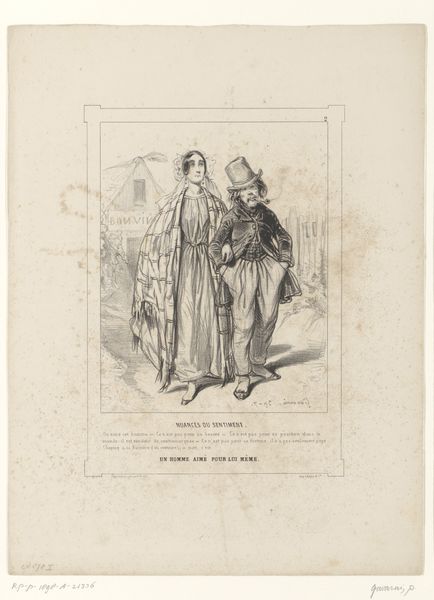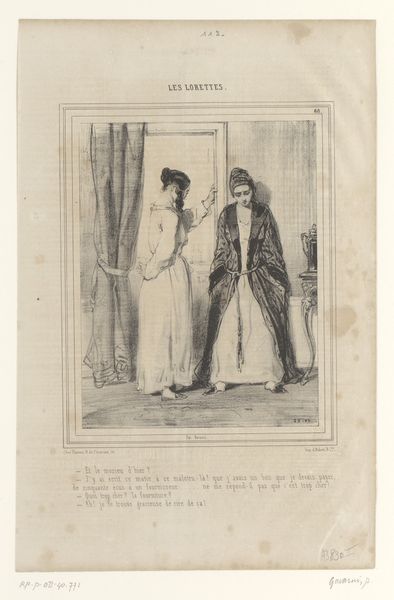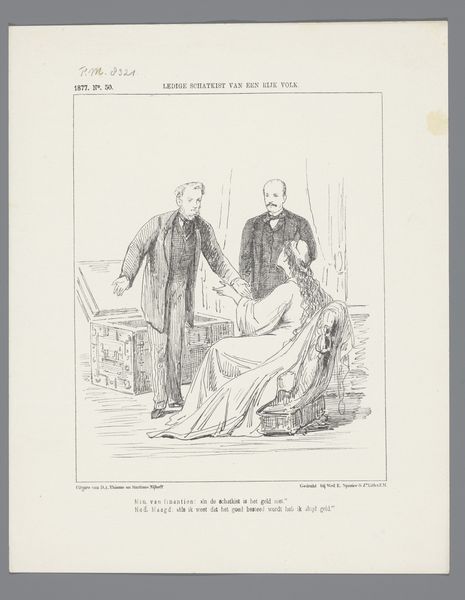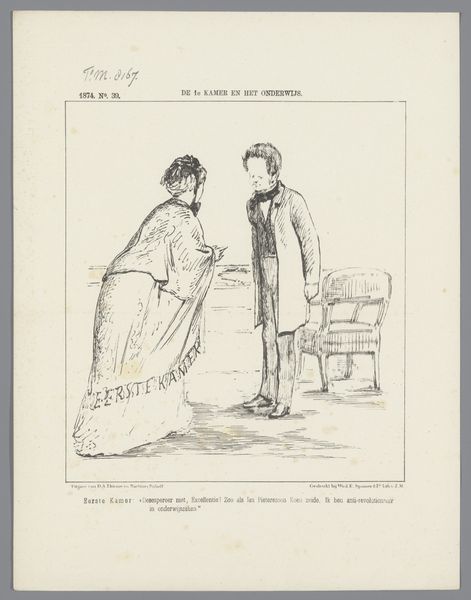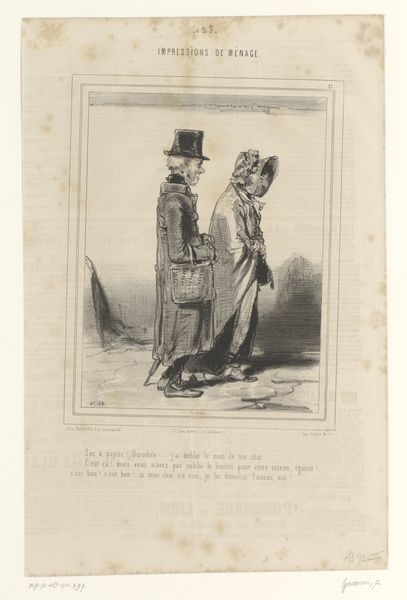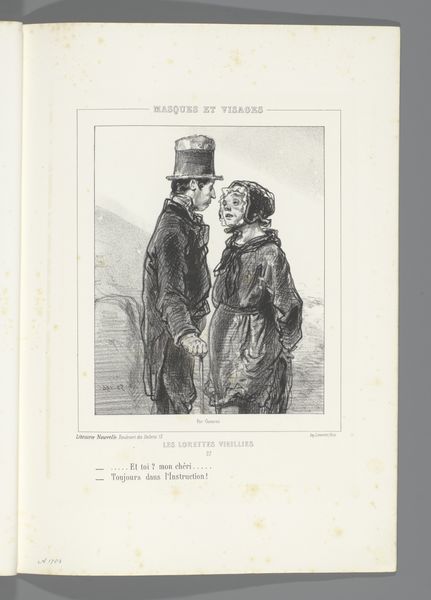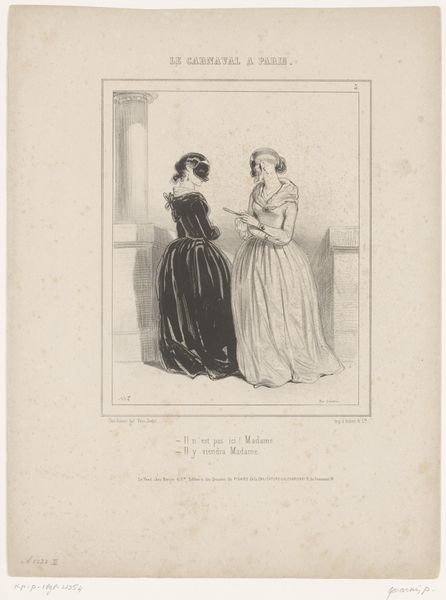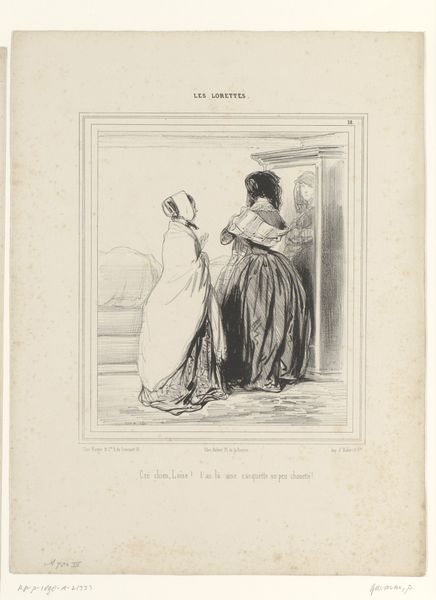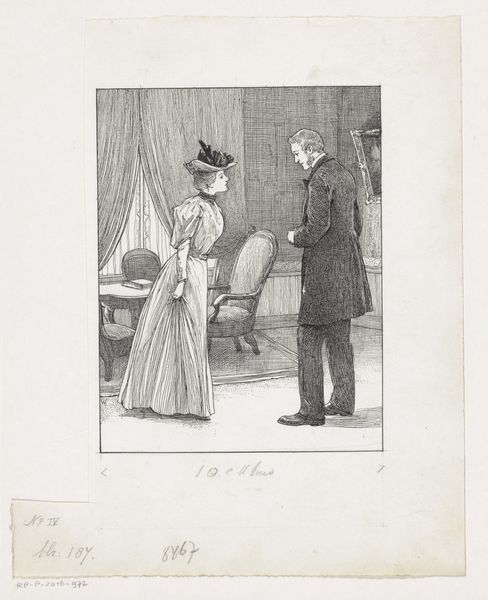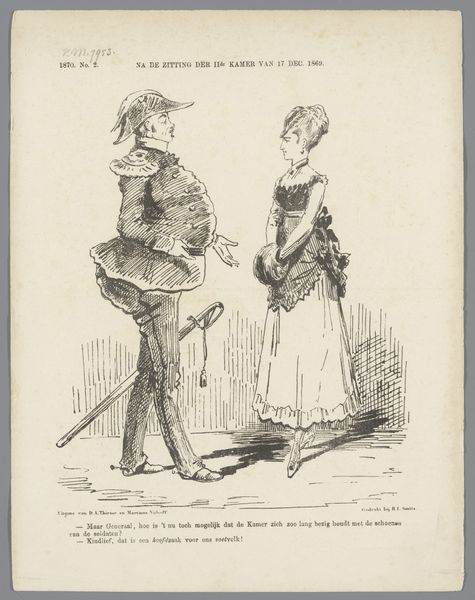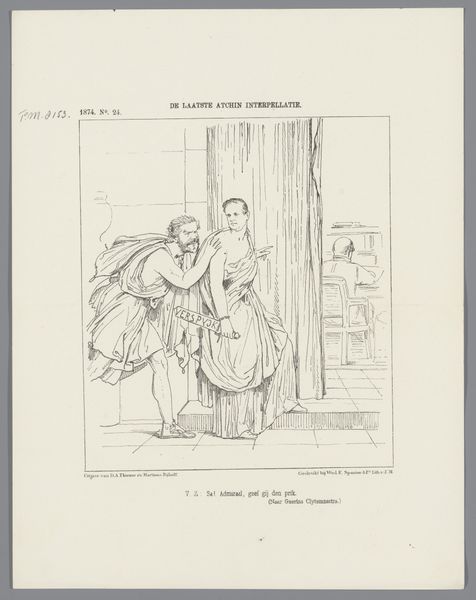
drawing, paper, pen
#
portrait
#
drawing
#
paper
#
pen
#
genre-painting
Dimensions: height 384 mm, width 278 mm
Copyright: Rijks Museum: Open Domain
Curator: I'm struck by the delicate cross-hatching in Paul Gavarni’s drawing, “Oude vrouw geeft jonge vrouw advies” from 1853, housed here at the Rijksmuseum. The artist worked with pen on paper. What is your initial reaction to it? Editor: It’s very somber, isn’t it? The figures, a young woman and an old woman, seem trapped within the confines of the drawing itself. It appears the old woman is providing words of wisdom to a much younger woman. Curator: The artist captures an age-old ritual, steeped in cultural memory – the passing down of knowledge, but notice the subtle details, like the headdress on the older woman, almost tribal, contrasting with the coiffed style of the young woman. What social scripts do you imagine are in play here? Editor: My attention is drawn to the differing textures and tonal effects achieved with a relatively simple tool: a pen. It makes me consider Gavarni's choices – why pen over, say, charcoal? Perhaps the linear quality helps emphasize social boundaries, yet pen invites reproducibility of images too. And what does this tension imply about the accessibility of these images during this era? Curator: The symbolism certainly runs deep; it shows more than meets the eye, if you can look beyond a genre painting. Consider, for example, the differing textures created via the lines. Editor: You know, I was also curious as to why a sheet of paper for a backdrop in contrast to adding context like a kitchen or living space of that era? Curator: Right, but in the context of material, we consider what paper would mean in relation to status. Paper at this time may not be easily accessible for all, but with the mechanization of its production becoming more efficient, maybe it symbolizes progress as well. Editor: True. There's definitely something compelling in seeing art as a part of an historical process itself rather than a symbolic moment. Curator: I agree with the point. Ultimately, the dialogue itself seems to hint at something much larger that would need some time to consider more, right? Editor: Most definitely. It just hints and tantalizes us to consider its possibilities to expand on a deeper history.
Comments
No comments
Be the first to comment and join the conversation on the ultimate creative platform.
